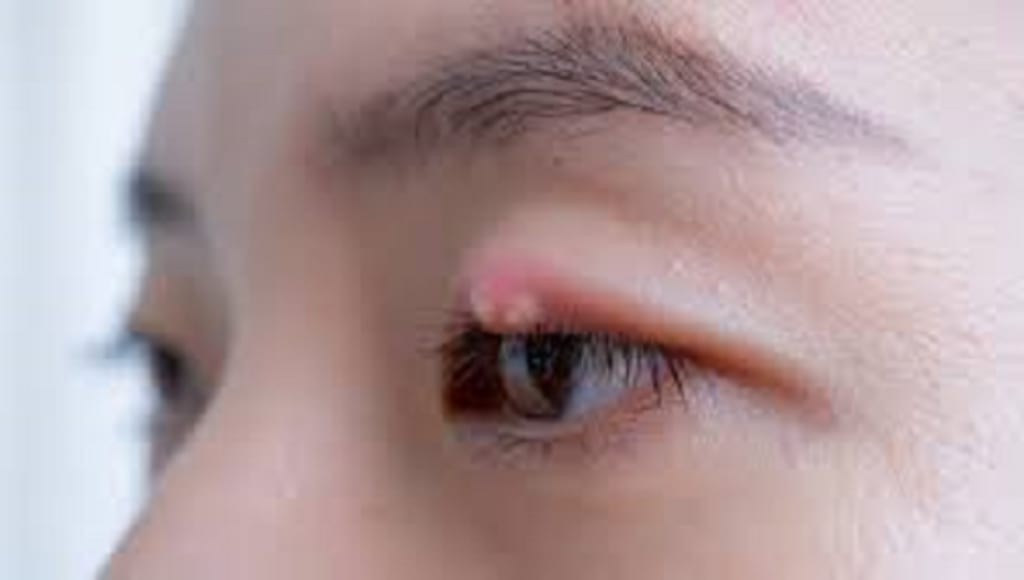How to Get Rid of a Chalazion
What is a chalazion?

Introduction
A chalazion is a commonly localized swelling of the eyelid or eyelid margins. It is also called a meibomian gland cyst. A Chalazion is a sterile chronic granulomatous inflammation of the meibomian glands or gland of Zeiss. In this condition the ducts of meibomian glands are blocked by any foreign substance, leading to the accumulation of sebaceous gland secretions. The article will discuss the causes, symptoms, histopathology, diagnosis, treatment options how to get rid of a chalazion, and prevention of chalazion in detail.
What are the causes of a chalazion?
The meibomian gland plays an important role in the production of lipids or oils. It makes up the outermost layer of the tear film called as lipid layer; it helps in preventing the evaporation of tear film and plays an important role in causing dry eyes. Any condition causing the blockage of ducts of the meibomian gland causes the accumulation of lipids and debris and the development of chalazion. The accumulated material may be invaded by organisms and leading to chalazion and formation of a bump. Certain other conditions associated with the development of chalazion include
• Poor eyelid hygiene
• Inflammatory conditions such as chronic blepharitis
• Seborrheic dermatitis (red and dry flaky lids)
• Tuberculosis
• Acne rosacea
• Hormonal changes
• Viral infection
What are the symptoms of a chalazion?
The most common symptoms of a chalazion are the presence of a bump on the eyelid. Other symptoms include
• Gradually enlarging painless swelling on the lid surface
• Redness or swelling
• Blurred vision if the chalazion is large and pushing the eyelid downward
• Discharge from the affected eye
• Itching or burning sensation
• Symptoms of associated conditions for example watering, dry flaky lid margins
Histopathology
The histopathology of chalazion shows a lipo granulomatous chronic inflammation with extracellular fat deposition surrounded by lipid-laden epithelioid cells, multinucleated giant cells, and lymphocytes.
How is chalazion diagnosed by a health professional
An opinion should be taken from an ophthalmologist when swelling is observed on the eyelid. The steps of eyelid swelling diagnosis include.
History taking: Detailed history is taken about the recurrence or associated conditions like acne rosace, and seborrheic dermatitis. Questions are asked about how the patient keeps his hygiene and uses his contact lenses.
Slit lamp examination: The doctor will also perform a detailed examination of the eyelid margins, tear film, and underlying conjunctiva. The ducts of meibomian glands will be observed under a slit lamp. The associated pain and location will be assessed to exclude any other cause.
Some health professionals may perform a biopsy of the lump in recurrent cases to exclude any underlying malignancy or bacterial infection.
Management and Treatment
Chalazion Treatment
• Conservative treatment: The majority of the cases of chalazion will disappear on their own and will need no treatment. However early treatment may be led to better patient satisfaction.
• Warm compresses: Applying a warm compress for 10 to 15 minutes at least four times a day to the affected eye can help reduce inflammation and increase blood flow to the area in the early stages. The compresses are applied in the directs of the opening of ducts.
• Oral antibiotics: Oral antibiotics are advised to resolve the associated bacterial infection, acne rosacea, seborrheic dermatitis, and inflammation.
• Steroid injection: A local injection of steroids is one of the non-invasive procedures for the treatment of chalazion. It is a favorable procedure for lesions near intricate structures such as the margin of the eyelid and lacrimal gland system. The success rate of steroid injection is comparable to surgery.
• Expression and Surgery: In rare cases, surgery may be necessary to remove the chalazion.
• Prophylaxis: Proper hygiene should be maintained to avoid recurrent cases. Other treatment option includes the use of oral tetracycline for a prolonged period.
How to get rid of a chalazion on your bottom eyelid?
The treatment of upper and lower lid margins same. The therapies applied for the upper lid can be applied for the lower lid which includes warm compresses and gentle massage.
How to get rid of a chalazion on your top eyelid?
The treatment options for upper and lower lids are the same.
Complications of Chalazion for complications please click here
About the Creator
sadia ayaz
My name is Dr. Sadia Ayaz and I am an ophthalmologist and eye surgeon. My medical degree is from Pakistan, I have done FCPS-1 / IMM from the College of Physicians and Surgeons Pakistan.
Enjoyed the story? Support the Creator.
Subscribe for free to receive all their stories in your feed. You could also pledge your support or give them a one-off tip, letting them know you appreciate their work.





Comments
There are no comments for this story
Be the first to respond and start the conversation.